The Red Shoes (1948 film)
9.2 /10 1 Votes9.2
96% Rotten Tomatoes Country United Kingdom | 8.3/10 IMDb 4/4 Roger Ebert Genre Drama, Music, Romance Duration Language EnglishFrench | |||||||||||||||||||||||||||||||||
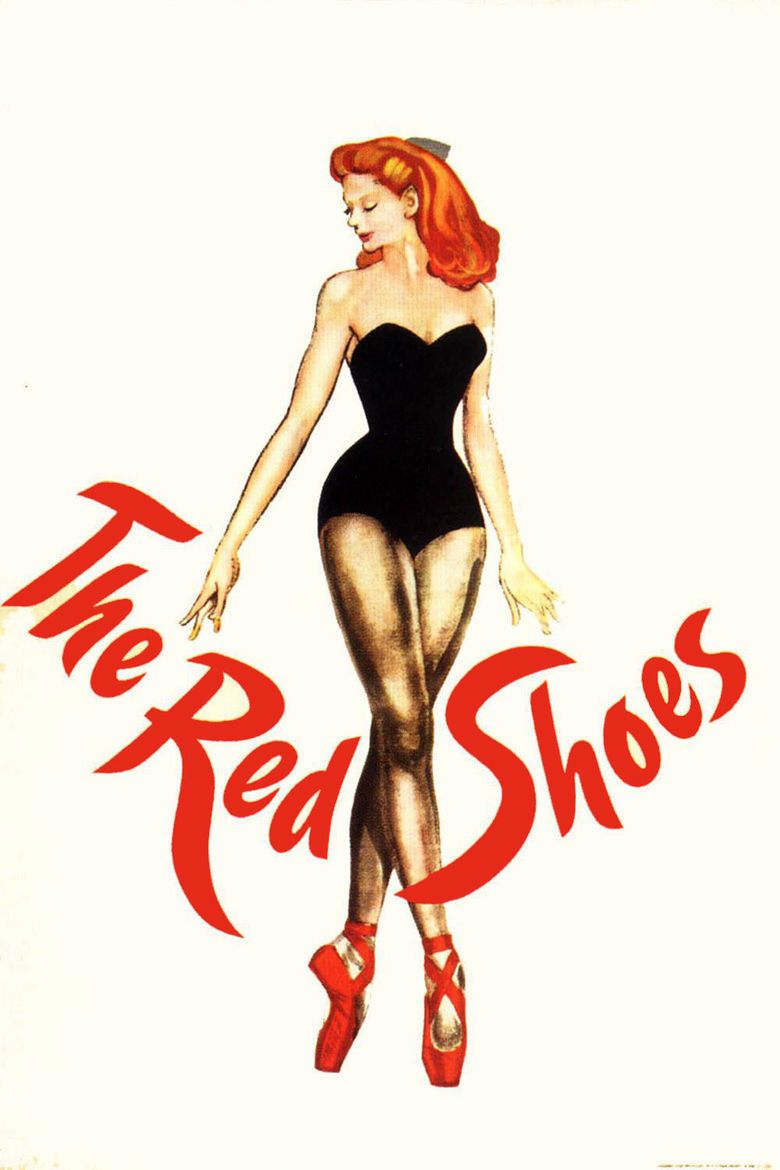 | ||||||||||||||||||||||||||||||||||
Director Michael PowellEmeric Pressburger Release date 6 September 1948 (1948-09-06) (UK)22 October (US) Writer Hans Christian Andersen (fairy tale), Emeric Pressburger (original screenplay), Keith Winter (additional dialogue), Michael Powell, Emeric Pressburger Initial release September 6, 1948 (United Kingdom) Cast (Boris Lermontov), (Victoria Page), (Ljubov), (Ivan Boleslawsky), (Ratov), (Livy) Similar movies Just a Question of Love , I Don't Want to Sleep Alone , Aurélien , The Bourne Identity , Ice Age: The Meltdown , Rocky | ||||||||||||||||||||||||||||||||||
The red shoes 1948 ballet sequence
The Red Shoes is a 1948 British drama film written, directed and produced by the team of Michael Powell and Emeric Pressburger, known collectively as The Archers. The film is about a ballerina who joins an established ballet company and becomes the lead dancer in a new ballet called The Red Shoes, itself based on the fairy tale "The Red Shoes" by Hans Christian Andersen.
Contents
- The red shoes 1948 ballet sequence
- The red shoes official trailer 1 billy shine jr movie 1948 hd
- Plot
- The Red Shoes ballet
- Inconsistencies
- Cast
- Production
- Subsequent history
- Academy Awards
- Golden Globes
- BAFTA Awards
- National Board of Review
- Venice Film Festival
- Digital restoration
- Other media
- References
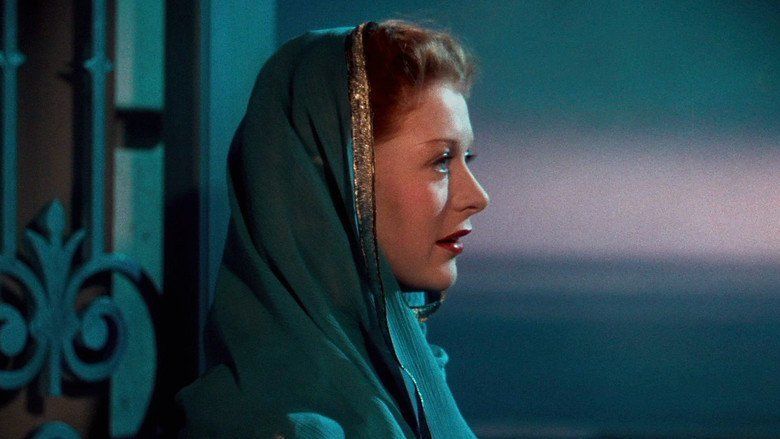
The film stars Moira Shearer, Anton Walbrook and Marius Goring and features Robert Helpmann, Léonide Massine and Ludmilla Tchérina, renowned dancers from the ballet world, as well as Esmond Knight and Albert Bassermann. It has original music by Brian Easdale and cinematography by Jack Cardiff, and is well regarded for its creative use of Technicolor.

At the 21st Academy Awards, The Red Shoes won awards for Best Original Score and Best Art Direction, as well as nominations for Best Picture, Best Original Screenplay and Best Film Editing. Today it is regarded as one of the best films of Powell and Pressburger's partnership and in 1999 was voted the 8th greatest British film of all time by the British Film Institute. Filmmakers such as Brian De Palma and Martin Scorsese have named it one of their all-time favourite films.

The red shoes official trailer 1 billy shine jr movie 1948 hd
Plot
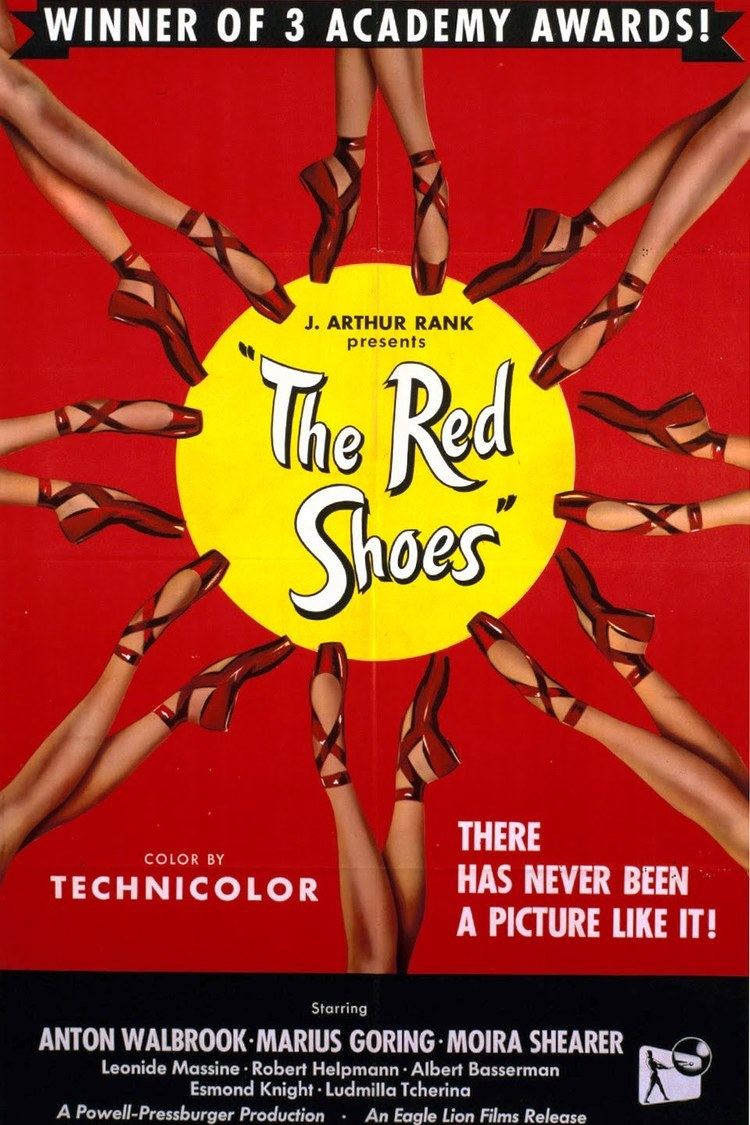
At a performance by the Ballet Lermontov at Covent Garden, three music conservatory students, Julian Craster, Terry and Ike are in attendance to hear the ballet score Heart of Fire, composed by their teacher, Professor Palmer. Separately present is Victoria 'Vicky' Page, a young, unknown dancer from an aristocratic background, with her aunt, Lady Neston. As Heart of Fire progresses, Julian recognises the music as one of his own compositions, and Ike notices another passage as another of Julian's works.
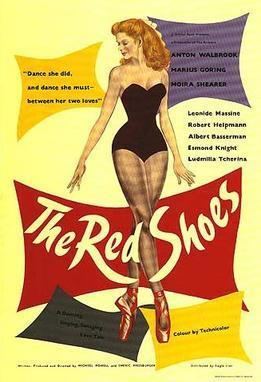
During the performance, Boris Lermontov, the company impresario, receives an invitation to an after-ballet party at Lady Neston's residence. Lermontov initially declines, but Professor Palmer persuades Lermontov to attend, saying that 'she's a great patron of the arts'. Julian leaves the performance in disillusionment at his professor's plagiarism of his music, followed by Terry and Ike. Lady Neston has arranged the after-ballet party as a surreptitious audition, to introduce her niece to Lermontov. Lermontov and Vicki meet, and he invites her to a rehearsal of the company.
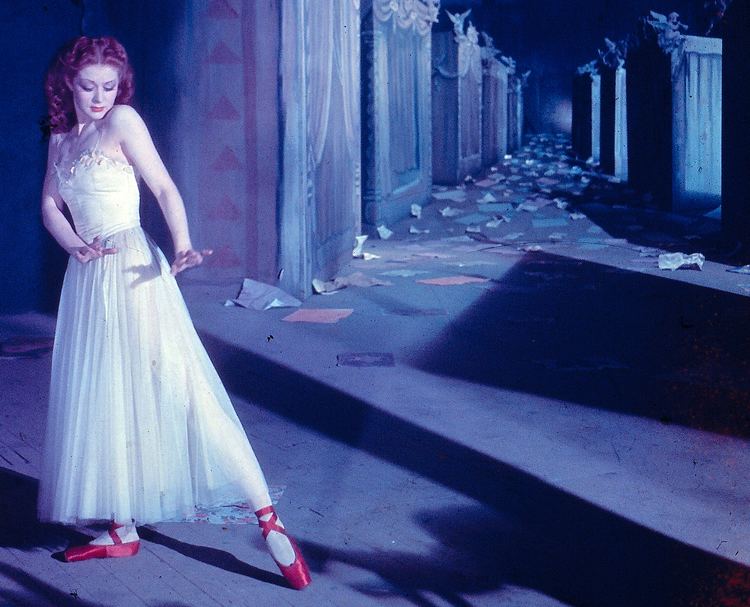
Julian has written to Lermontov to explain the circumstances behind Heart of Fire, but then tries to retrieve the letter. Lermontov's assistant Dimitri thwarts all attempts by Julian to gain entry to Lermontov's suite, but finally Lermontov gives Julian an audience. Julian says that he wishes to retrieve his letter before Lermontov has seen it, except that Lermontov has already read the letter.

Lermontov asks Julian to play one of his own works at the piano. After hearing Julian play, he hires Julian as a repetiteur for the company orchestra and assistant to the company's conductor, Livingstone Montague (known colloquially to the company as 'Livy'). Lermontov fully realises that Julian was the true composer of Heart of Fire.
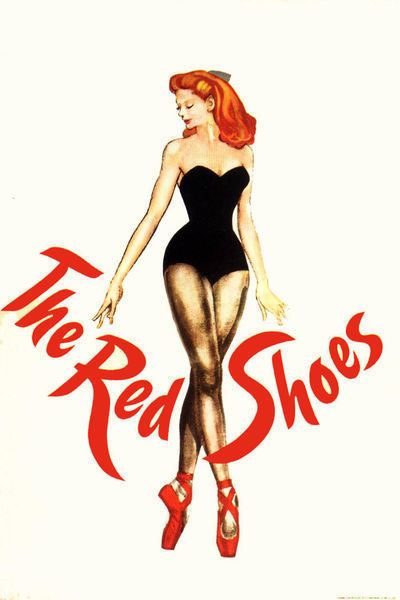
Julian and Vicky arrive for work at the Ballet Lermontov on the same day. After Lermontov ignores Vicky's 'good morning' greeting, the company's production designer, Sergei Ratov, mollifies her disappointment. Livy is initially disdainful of Julian, after the latter has summoned the orchestra an hour early for rehearsal and noted an error in the score, and tells Julian that as a result, the company must pay the musicians for the extra rehearsal.
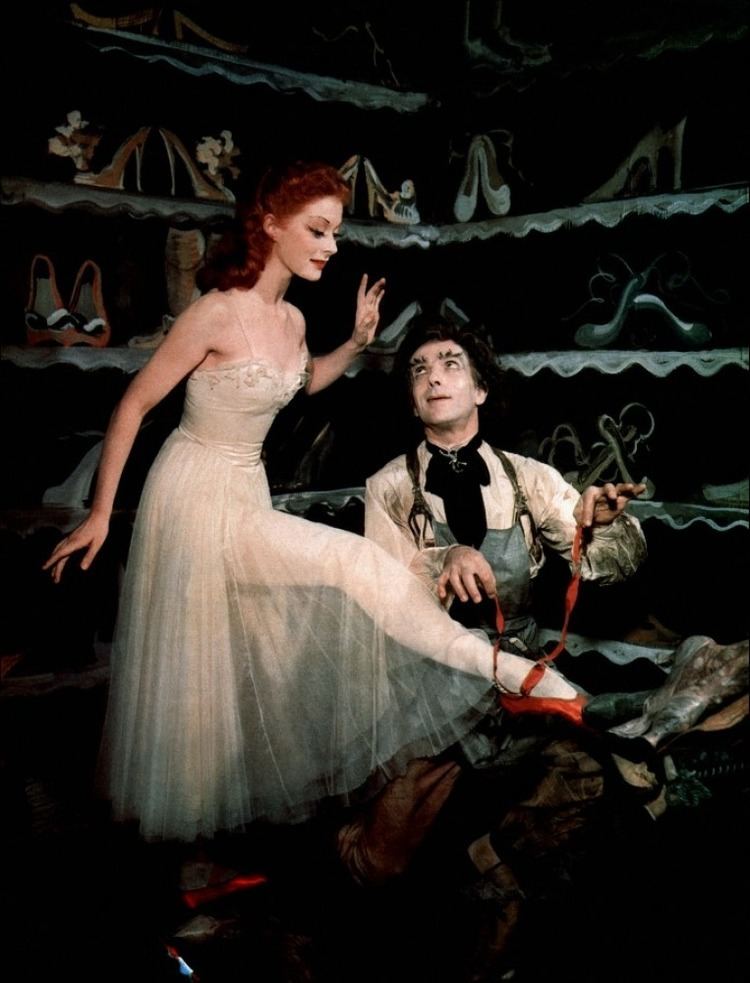
Later, Vicky dances in a matinee performance of Swan Lake at the Mercury Theatre, Notting Hill Gate, in a production with a company led by Marie Rambert (who appears in the film as herself in a wordless cameo). Lermontov is in attendance, which Vicky does not realise until the midst of her performance. He realises her potential and invites Vicky to go with the company to Paris and Monte Carlo, with Grisha Ljubov, the company's chief choreographer, to guide her. When his prima ballerina Irina Boronskaya announces that she is to be married, Lermontov strongly disapproves, and she leaves the company. Lermontov begins to see Vicky as a possible successor to Irina.
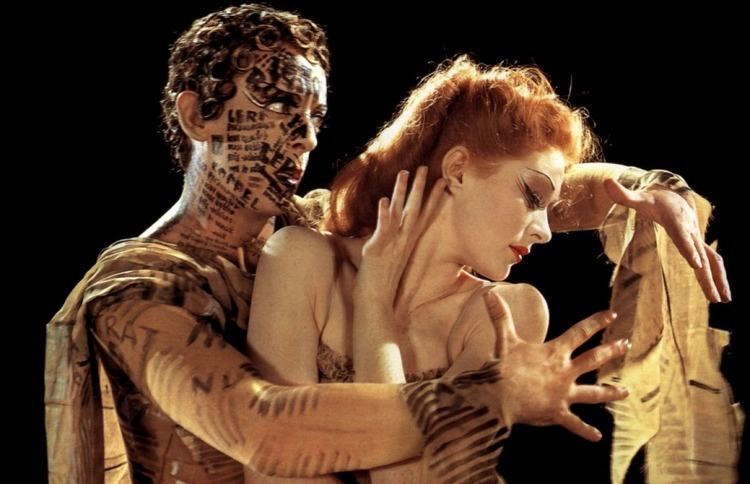
Lermontov decides to create a starring role for her in a new ballet, The Red Shoes, for which Julian is to provide the music. When Julian plays selections from the piano score for the ballet, Ratov and Ljubov are impressed, and Livy begins to change his attitude to Julian more favourably. As the premiere of the ballet approaches, Vicky and Julian bicker artistically.
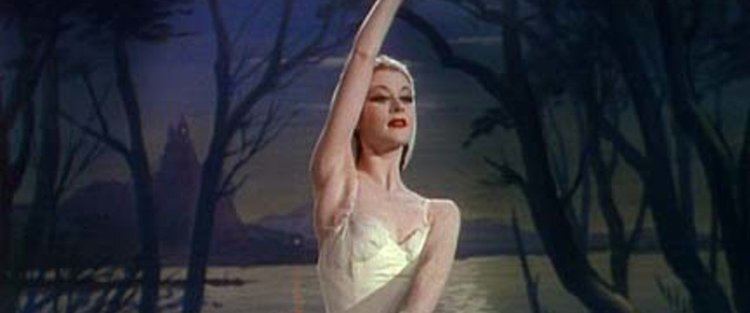
The Red Shoes ballet is a great success, and Lermontov talks with Vicky about her future. Lermontov revitalizes the company's repertoire with Vicky in the lead roles, with Julian composing some of the most successful scores. In the meantime, Vicky and Julian have fallen in love, but keep their relationship a secret from Lermontov.
Lermontov begins to have personal feelings toward Vicky, and becomes resentful of the relationship between Vicky and Julian after he learns of their romance for the first time. Lermontov rejects Julian's latest ballet score as childish and vulgar, which Julian knows to be untrue. Lermontov fires Julian, and Vicky decides to leave the company with him. They marry and live in London where Julian works on composing a new opera.
Initially enforcing Vicky's contract, which prevents her dancing with other companies, Lermontov later relents his decision to enforce Vicky's contract, and permits her to dance where and when she pleases, except for The Red Shoes, where he retains the rights to the ballet and ownership of Julian's music. Lermontov refuses to mount it again or allow anyone else to produce the ballet. Lermontov recruits Irina back to the company in the interim.
Some time later, whilst on holiday with her aunt in Monte Carlo, Vicky receives a visit on the train from Lermontov, who convinces her to return to the company to dance in a revival of The Red Shoes. On opening night, as she is preparing to perform, Julian appears in her dressing room; he has left the premiere of his opera at Covent Garden to take her back with him. Lermontov arrives, and he and Julian contend for Vicky's affections. Torn between her love for Julian and her need to dance, she cannot decide what to do. Julian, realising that he has lost her, leaves for the railway station, and Lermontov consoles her, urging her to dance.
While being escorted to the stage by her dresser, and wearing the red shoes, Vicky, apparently under the influence of the red shoes, runs out of the theatre. Julian, on the platform of the train station, sees her and runs towards her. Vicky jumps from a balcony and falls in front of an approaching train.
Shaken by the events and broken in spirit, Lermontov appears before the audience to announce that "Miss Page is unable to dance tonight – nor indeed any other night." As a mark of respect, the company performs The Red Shoes with a spotlight on the empty space where Vicky would have been.
While lying close to death on a stretcher, bloody and battered, Vicky asks Julian to remove the red shoes, just as in the end of The Red Shoes ballet.
"The Red Shoes" ballet
The ballet roughly follows the Hans Christian Andersen story upon which it is based. A young woman sees a pair of red shoes in a shop window, which are offered to her by the demonic Shoemaker. She puts them on and begins to dance with her boyfriend. They go to a carnival, where she seemingly forgets about the boyfriend as she dances with every man she comes across. Her boyfriend is carried away and nothing is left of him but his image on a piece of cellophane, which she tramples.
She attempts to return home to her mother, but the red shoes, controlled by the Shoemaker, keep her dancing. She falls into a netherworld, where she dances with a piece of newspaper which turns briefly into her boyfriend. She is then beset by grotesque creatures, including the Shoemaker, who converge upon her in a manner reminiscent of The Rite of Spring. They abruptly disappear, leaving her alone. No matter where she flees, the shoes refuse to stop dancing.
Near death from exhaustion, clothed in rags, she finds herself in front of a church where a funeral is in progress. The priest offers to help her. She motions to him to remove the shoes, and as he does so, she dies. He carries her into the church, and the Shoemaker retrieves the shoes, to be offered to his next victim.
Australian ballet star Robert Helpmann choreographed the ballet, played the role of the lead dancer of the Ballet Lermontov and danced the part of the boyfriend. Léonide Massine created his own choreography for his role as the Shoemaker. Brian Easdale composed the original music for the film, including the full ballet of The Red Shoes. Easdale conducted most of the music in the film, except for the Ballet of the Red Shoes, where Sir Thomas Beecham conducted the score and received prominent screen credit. Beecham's Royal Philharmonic Orchestra was the featured orchestra for the film. Easdale received the 1948 Academy Award for Best Original Score, the first British film composer so honoured.
Inconsistencies
Cast
Cast notes:
Production
Pressburger originally wrote the screenplay for Alexander Korda as a vehicle for Korda's future wife Merle Oberon. After some years had passed without the film being made, Powell and Pressburger rewrote the screenplay, including more emphasis on dancing, and produced it themselves.
Powell and Pressburger decided early on that they had to use dancers who could act rather than actors who could dance a bit. To create a realistic feeling of a ballet company at work, and to be able to include a fifteen-minute ballet as the high point of the film, they created their own ballet company using many dancers from The Royal Ballet. The principal dancers were Robert Helpmann (who also choreographed the main ballet), Léonide Massine (who also choreographed the role of The Shoemaker), Ludmilla Tchérina and Moira Shearer.
Subsequent history
The Red Shoes received positive reviews, but did not make much money at first in the UK, because the Rank Organisation could not afford to spend much on promotion due to severe financial problems exacerbated by the expense of Caesar and Cleopatra (1945). Also, according to Powell, the Rank Organisation did not understand the artistic merits of the film, and this strain in the relationship between The Archers and the Rank Organisation led to the end of the partnership between them, with The Archers moving to work for Alexander Korda. However, the film ended up becoming the sixth most popular movie at the British box office in 1948.
The film received only a limited release in the U.S., in a 110-week run at a single theatre. In 1948 it earned $2.2 million in US rentals.
The success of this run convinced Universal Studios that The Red Shoes was a worthwhile film and they took over the U.S. distribution in 1951, The Red Shoes becoming one of the highest earning British films of all time.
Contemporary reviews from ballet critics in the UK and in the US were mixed. Some wrote positively, but others were mixed, criticising the film for being clichéd and unrealistic.
The Red Shoes led to a few other films that treated ballet seriously. It was only after he made the studio executives watch The Red Shoes a few times that Gene Kelly was able to include ballet in An American in Paris. After the film became a huge success in the U.S., MGM began plans to make a film actually titled Red Shoes Run Faster with red-haired dancer Lucille Bremer, but quickly scrapped the idea.
The film is particularly known for its cinematography, particularly its use of colour. In the introduction for The Criterion Collection DVD of Jean Renoir's The River, Martin Scorsese, who has long championed Powell and Pressburger's works, considers The Red Shoes and The River to be the two most beautiful colour films.
The Red Shoes underwent a complete restoration as the result of a seven-year effort. With fundraising spearheaded by Scorsese and his longtime editor (and Michael Powell's widow), Thelma Schoonmaker, Robert Gitt and Barbara Whitehead completed the restoration work at the UCLA Film and Television Archive. This restored version made its debut at the 2009 Cannes Film Festival, followed soon after by a DVD and Blu-ray release in the UK by ITV DVD as well as screenings at festivals around the world. The digitally restored print has also subsequently been released in America by Criterion on DVD & Blu-ray.
Academy Awards
Golden Globes
BAFTA Awards
National Board of Review
Venice Film Festival
Digital restoration
In 2006 digital restoration of the film was done by Warner Bros. Motion Picture Imaging. The digital pictures were frame by frame digitally restored at Prasad Corporation to remove dirt, tears, scratches, and other artifacts. The film was restored to its original look.
Other media
The film was adapted by Jule Styne (music) and Marsha Norman (book and lyrics) into a Broadway musical, which was directed by Stanley Donen. The Red Shoes opened on December 16, 1993 at the Gershwin Theatre, with Steve Barton playing Boris Lermontov, Margaret Illmann playing Victoria Page, and Hugh Panaro playing Julian Craster. The choreography by Lar Lubovitch received the TDF's Astaire Award, but the musical closed after 51 previews and only five performances.
"The Red Shoes" is also referenced in A Chorus Line and its 1985 film adaptation as having inspired several of the characters to become dancers.
The film was adapted as a ballet choreographed by Matthew Bourne and premiered in December 2016 in London.
Kate Bush's song and album The Red Shoes was inspired by the film. The music was subsequently used in a film The Line, the Cross and the Curve (1993) made by Kate Bush, starring Miranda Richardson and Lindsay Kemp, which references the original film. The 1952 film The Firebird, directed by Hasse Ekman, is largely an homage to The Red Shoes.
In 2005, Ballet Ireland produced Diaghilev And The Red Shoes, a tribute to Sergei Diaghilev, the ballet impresario who founded Ballets Russes, consisting of excerpts from works made famous by that seminal company. An excerpt from The Red Shoes ballet was included, since Diaghilev was one inspiration for the character of Lermontov. The 2012 novel Letters from Yelena, by British author Guy Mankowski, was reported to have been influenced by the film.
References
The Red Shoes (1948 film) WikipediaThe Red Shoes (1948 film) IMDbThe Red Shoes (1948 film) Rotten TomatoesThe Red Shoes (1948 film) Roger EbertThe Red Shoes (1948 film) themoviedb.org
